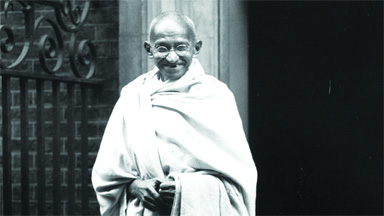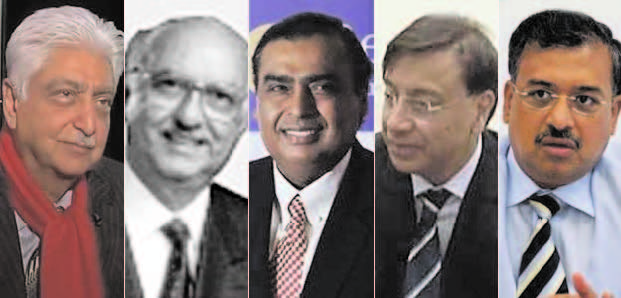
Mohandas Karamchand Gandhi, popularly known as Mahatma Gandhiji for his selfless struggle for independence of India from British rule. He is well-known for his battle against British atrocities without a war cry but a peaceful procession, leading the whole nation into the battlefield with no ammunition but a spirit of perseverance. He spearheads various campaigns such as Quit India, Non-Cooperation, Dandi March, and others against colonial rule. His contributions to others in freeing the nation from the heinous clutches of the British earned him honors like being called ‘Father of the Nation’ and his birthday Oct 2nd as a National holiday.
Early Life of Mahatma Gandhi
Birth – Mahatma Gandhi was born on October 2nd, 1869, originally named Mohandas Karamchand Gandhi. He was born in a coastal town called Porbandar in Gujarat, India. He was born into a Hindu Bodh Baniya family, which was deeply religious and observed rituals and vows regularly. His father, Karamchand Gandhi, was a Diwan, a chief minister of Porbandar. His mother, Putlibai, was deeply religious and a spiritual person, who observed the duties of a housewife.
Upbringing – Gandhi’s upbringing was in a religious environment that greatly influenced his later life. His father’s staunch principles fostered values like devotion, self-discipline and tolerance. His mother’s deep religious values taught him the importance of religion and spirituality.
Education – Gandhi received his primary education in Porbandar. Later he moved to Rajkot where his family later settled. With no remarkable academic achievements, he was a very shy and mediocre student during his early school days. His unquenchable curiosity and strong moral compass had guided him towards personal and political development. At the age of 18, in 1888, he traveled to London to study law at Inner Temple. Later in London, he was exposed to Western ideals and political thoughts which shaped his entire worldview.
Early Influences of Ideologies – His early influences include the religious teachings of Jainism, Vaishnavism, and Christianity. These played a pivotal role in shaping his philosophies of non-violence and truth in later years. His mother’s deeply religious and spiritual influence instilled in him a sense of empathy, sympathy, and compassion. When he was posted as a lawyer in South Africa, he faced a lot of discrimination in his early years. When he worked as a lawyer he solidified his commitment to fight injustice through peaceful and non-violent means. These early experiences and ideologies from varied authors laid a foundation for his lifelong dedication to truth and non-violence. He was greatly influenced by the writings of ‘Henry David Thoreau’.
Role in India’s Independence Movement
Gandhiji’s leadership is echoed across the globe for gathering all social, religious, and regional communities all over India and cemented his philosophy into practice in non-violent methods. The following are the movements that brought Indians together and fought for Independence.
Non – Cooperation Movement
The non-cooperation movement was observed from 1920 to 1922. This movement was one of the Gandhi’s earliest and most influential campaigns against the British rule. This was a result of the Jallianwala Bagh massacre in 1919 and other British harsh repressive measures. The main aspect of the non-cooperation movement was boycotting British goods and advocating the use of homegrown products through self-reliance. This movement has united millions of Indians across varied regions and communities. This movement emphasized dismantling the British authority peacefully without violence. However, the movement was suspended after the violence erupted in Chauri Chaura. Yet Gandhi’s focus on peaceful resistance remained a hallmark of the movement.
Civil Disobedience Movement
This movement was observed from 1930 to 1934. The Civil Disobedience Movement started with Gandhi’s famous salt march in 1930. This movement was a direct challenge to the British monopoly on salt production. The march was led by Gandhi ji and his followers later, from Sabarmati Ashram to Dandi, which covered 240 miles, by defying British laws and making salt from seawater. This movement united millions of Indians, refusing to pay taxes, defying British laws, and boycotting British goods. This movement involved urban and rural populations, characterizing non-violent resistance and mass participation. This movement led to the arrest of Gandhi and thousands of his supporters, with brutal repression. This movement significantly weakened British control and brought Indian independence close to global attention.
Quit India Movement
This movement was launched by Gandhi in 1942, the most aggressive phase of India’s freedom struggle. He observed fastings and gave famous speeches like Do or Die, urging Indians to intensify their efforts to expel British rule from India. Gandhiji utilized the time for immediate independence that was raging under World War 2 when the British sought India’s support. Widespread resistance campaigns such as strikes, protests, and acts of sabotage were observed. The British government arrested Gandhiji and his followers with brute force intending to crush the momentum. The movement was suppressed by 1944, yet it left an indelible mark during the freedom struggle.
The United Nations declared October 2 as “International Day of Non-Violence” on June 15, 2007. Several programmes and cultural events are organised to pay homage to the Father Of The Nation and spread his teachings. Many people also visit places dedicated to Mahatma Gandhi on this day – like Raj Ghat in Delhi, Mani Bhavan in Mumbai and Sabarmati Ashram in Gujarat.
A Fight Against Racism
After completing his legal education, Gandhi went to South Africa in 1893 to attend to a legal matter of Dada Abdullah Jhave. This was a pivotal moment in his life as he encountered systematic racism for the first time. One incident, where he was thrown off a train in Pietermaritzburg for refusing to leave a “whites-only” compartment, served as a turning point.
This moment of humiliation fueled his desire to fight for justice and the dignity of the oppressed. His first nonviolent resistance movement was aimed at securing the rights of Indian immigrants who were subjected to harsh labor conditions and unjust laws. He founded the ‘Natal Indian Congress’ in 1894, started Indian Opinion in 1903, and established the ‘Phoenix Settlement’ in 1904. Gandhi’s nonviolent methods laid the foundation for future movements in India, and South Africa became his testing ground for developing tactics that would later challenge British colonialism.
Return to India
In 1915, Gandhi returned to India, equipped with his principles of nonviolent civil disobedience. He was quickly drawn into the freedom struggle and started advocating for the rights of India’s poorest communities. He focused on addressing their concerns and highlighting injustices such as high taxes and exploitative British policies.
The Final Years and Legacy of Gandhi
As India moved closer to independence, tensions between Hindus and Muslims grew, leading to the partition of India in 1947. Gandhi ji, deeply pained by the resulting communal violence, traveled extensively to promote peace and reconciliation.
Tragically, on January 30, 1948, Gandhi was assassinated by Nathuram Godse, sending shockwaves across the nation and the world. His death marked a profound loss for India and those who believed in his vision of nonviolence and communal harmony.
However, Gandhi’s legacy as a champion of nonviolence and civil rights continues to influence global movements for justice and equality. Leaders like Martin Luther King Jr. and Nelson Mandela drew from his principles to advance their causes.




Be the first to comment